Introduction to Polytechnic University of Milan
Polytechnic University of Milan is a national polytechnic university located in Milan, Italy. Founded in 1863, it is the oldest university in the Milan region and the largest scientific and technological university in Italy. It is one of the three national polytechnic universities in Italy and the first public university in Italy to teach master's and doctoral programs in English.
Overview
Number of students and faculty: In 2024, the school has 42,496 students, including 27,663 undergraduates, 14,331 postgraduates, and 900 doctoral students; in terms of faculty, there are 1,400 academic staff and 1,200 administrative staff.
Campus distribution: There are two main campuses in Milan, where most teaching and research activities are carried out, and there are branch campuses in five other cities in Lombardy and Emilia-Romagna. The central office and headquarters are located in the historical campus of the university city in Milan, which is also the largest and has been in use since 1927.
History
November 1863 It was founded on 29 August 1861 by Francesco Brioschi, then secretary to the Minister of Education and president of the University of Pavia. It was originally named the “Higher Institute of Technology” and initially only taught civil engineering and industrial engineering. In 1865, under the influence of the Brera Academy of Fine Arts, the Department of Architecture was added. In 1927, the school moved to Piazza Leonardo da Vinci, now the University City, and was renamed the Royal Polytechnic. After World War II, Italy became a republic and the word “Royal” was removed. In 1937, it was officially renamed the Politecnico di Milano. In 1942, it began to use the logo derived from Raphael’s famous painting “The School of Athens”. In 1954, the first electronic computing center in Europe was operated in the school; in 1977, the Sirius satellite was developed and successfully launched by the Polytechnic University of Milan and other companies.
School Strength
Faculty: It has 1,400 academic staff, including many experts and scholars with profound attainments and rich experience in their respective fields, such as IEE Fellow, ACM Fellow, IFAC Fellow, etc.
Teaching Resources: The school has 12 research departments, 4 colleges focusing on education and teaching, and also has a number of advanced laboratories and research centers, providing students with good learning and scientific research conditions.
Institutional Nature
Public research university.
Educational Philosophy
Focus on cultivating students' innovative spirit, practical ability and interdisciplinary literacy, gradually realizing political progress and social development through scientific progress, and is committed to cultivating students into professionals who can cope with complex real-life problems and have a sense of social responsibility, and promote the common progress of science and technology and society.
Key laboratories and disciplines
Key laboratories: The school has a number of advanced laboratories, such as laboratories in engineering technology, computer science, materials science and other fields, providing researchers and students with good research conditions and practical platforms.
Advantageous disciplines: Politecnico di Milano excels in engineering, architecture, design and other disciplines. Its engineering disciplines cover mechanical engineering, electronic engineering, civil engineering, chemical engineering and other majors. In the 2022-2023 US News World University Rankings by Subject, mechanical engineering ranks 31st, civil engineering ranks 36th, and chemical engineering ranks 85th; architecture ranks 9th in the QS World University Rankings by Subject; design ranks 5th.
Faculty
The school has 4 colleges, namely the School of Architecture, Urban Planning and Construction, the School of Design, the School of Civil, Environmental and Territorial Management, and the School of Industrial and Information Engineering; and 12 research departments, including the Department of Architecture and Urban Research, the Department of Architectural Environment and Construction, the Department of Civil and Environmental Engineering, the Department of Design, the Department of Chemical Materials and Chemical Engineering, the Department of Electronic Information and Bioengineering, the Department of Energy, the Department of Physics, the Department of Management Economics and Industrial Engineering, the Department of Mathematics, the Department of Mechanical Engineering, and the Department of Aeronautical Science and Engineering.
Ranking
In the 2024 QS World University Rankings, Politecnico di Milano ranks 139th.
In the 2022-2023 US News World University Rankings, it ranks 297th, including 13th among the best global universities in Italy and 125th among the best global universities in Europe.
Expenses
Politecnico di Milano is a public university with relatively affordable tuition fees. The tuition fees for undergraduate and master's programs are about 1000-3000 euros per year, and the tuition fees for different majors may vary. In addition, the school also provides preferential policies such as scholarships and grants for outstanding students to reduce the financial burden of students.
Campus Environment
Architectural Style: The main campus is located in the university town in the center of Milan. The campus has a variety of architectural styles, including historic teaching buildings and modern scientific research facilities, reflecting the fusion of tradition and modernity.
Learning and Living Facilities: The school has a well-stocked library, advanced laboratories, comfortable student dormitories, etc., providing students with good learning and living conditions. In addition, the campus is conveniently located around the campus and has rich cultural activities. Students can fully enjoy the cultural and artistic resources of Milan, the fashion capital.
-
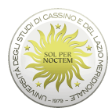
University of Cassino and Southern Lazio
-

University of Campania Luigi Vanvitelli
-
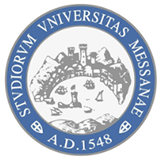
University of Messina
-
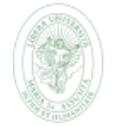
Libera Universita degli Studi Maria SS. Assunta di Roma (LUMSA)
-
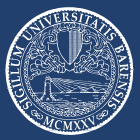
University of Bari Aldo Moro
-
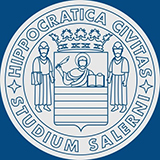
University of Salerno
-
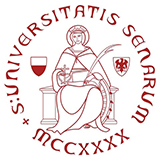
University of Siena
-
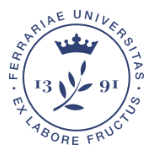
University of Ferrara
-
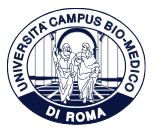
Campus Bio-Medico University of Rome
-

University of Genoa
-

Mesoamerican University
-

Istmo University
-

Mariano Galvez University of Guatemala
-

Regional University of Guatemala
-

Galileo University
-

Francisco Marroquín University
-

Rafael Landívar University
-

University of the Valley of Guatemala
-

University of San Carlos of Guatemala
-

Technological Institute of Tlaxcala Plateau
-

Golfo University
-

Technological University of South Sonora
-

Technological University of Huejotzingo
-

Tizimín Institute of Technology
-

Chilpancingo Institute of Technology

